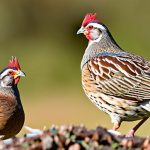Chickens have specific requirements for surviving cold weather, and understanding these is essential for maintaining the health and productivity of a flock during winter. While chickens are generally hardy, they become vulnerable when temperatures drop below freezing. To maintain their body temperature, chickens fluff their feathers, creating an insulating air layer.
Access to fresh water and food is crucial for energy maintenance and hydration. Without these essentials, chickens may experience cold stress, leading to reduced egg production, illness, or death. Adequate shelter is vital for chickens in cold weather.
A well-ventilated but draft-free coop protects against wind, rain, and snow. Chickens are more sensitive to drafts than to cold temperatures, so proper ventilation without chilling drafts is crucial. A dry, clean environment helps prevent frostbite and other cold-related health issues.
Understanding and addressing these needs is fundamental to ensuring the well-being of chickens during winter months.
Table of Contents
- 1 Providing adequate shelter for chickens in below zero temperatures
- 2 Insulating the chicken coop to retain heat
- 3 Using heat lamps or heaters to keep chickens warm
- 4 Providing extra bedding and nesting materials
- 5 Ensuring access to fresh water and food in freezing temperatures
- 6 Monitoring the health and behavior of chickens during cold weather
- 7 FAQs
- 7.1 What are the best ways to keep chickens warm in below zero temperatures?
- 7.2 How can I insulate my chicken coop to keep it warm in below zero temperatures?
- 7.3 Is it safe to use heat lamps or heated pads to keep chickens warm in below zero temperatures?
- 7.4 How can I ensure good ventilation in the chicken coop while keeping it warm in below zero temperatures?
- 7.5 What type of bedding is best for keeping chickens warm in below zero temperatures?
Key Takeaways
- Chickens need extra care and attention in cold weather to stay healthy and comfortable
- Adequate shelter is crucial for chickens to protect them from below zero temperatures
- Insulating the chicken coop helps retain heat and keeps chickens warm
- Heat lamps or heaters can be used to provide additional warmth for chickens in extreme cold
- Extra bedding and nesting materials help chickens stay warm and comfortable during cold weather
- Access to fresh water and food is essential for chickens to stay hydrated and nourished in freezing temperatures
- Regular monitoring of the health and behavior of chickens is important to ensure they are coping well with the cold weather
Providing adequate shelter for chickens in below zero temperatures
Insulation and Bedding
This can be achieved by using materials such as straw, hay, or wood shavings to provide a thick layer of bedding on the coop floor. This not only helps to insulate the coop but also provides a comfortable and warm surface for the chickens to rest on. Additionally, providing extra bedding in the nesting boxes can help keep eggs from freezing and cracking.
Sealing Drafts and Leaks
In below zero temperatures, it’s also important to check for any drafts or leaks in the coop that could let cold air in and warm air out. Sealing any gaps or cracks with weather-stripping or caulking can help maintain a consistent temperature inside the coop.
Ventilation and Moisture Control
It’s also crucial to ensure that the coop is well-ventilated to prevent moisture buildup, which can lead to frostbite and respiratory issues in chickens. Adequate shelter for chickens in below zero temperatures requires careful attention to detail and proactive measures to protect the flock from the harsh winter conditions.
Insulating the chicken coop to retain heat

Insulating the chicken coop is essential for retaining heat and maintaining a comfortable environment for chickens during cold weather. There are several ways to insulate a coop, including adding insulation panels to the walls and ceiling, using reflective insulation materials, or even repurposing old blankets or rugs to line the coop walls. Insulation helps to trap heat inside the coop and prevent cold air from seeping in, creating a more stable and comfortable environment for the chickens.
Another effective way to insulate the coop is by using straw bales around the exterior walls as an additional layer of protection against the cold. This not only helps to retain heat but also provides extra insulation from wind and snow. It’s important to regularly check the insulation in the coop and make any necessary adjustments to ensure that it remains effective throughout the winter months.
Insulating the chicken coop is a crucial step in creating a warm and cozy space for chickens to thrive in cold weather.
Using heat lamps or heaters to keep chickens warm
In extreme cold temperatures, using heat lamps or heaters can be necessary to keep chickens warm and prevent cold stress. Heat lamps can be hung in the coop to provide supplemental warmth, especially during particularly cold nights. It’s important to position heat lamps safely away from flammable materials and ensure that they are securely attached to prevent any accidents.
Additionally, using thermostatically controlled heaters can help maintain a consistent temperature inside the coop without posing a fire hazard. When using heat lamps or heaters, it’s crucial to monitor the temperature inside the coop regularly to ensure that it remains within a safe range for the chickens. It’s also important to provide enough space for the chickens to move away from the heat source if they become too warm.
Using heat lamps or heaters to keep chickens warm should be done with caution and careful attention to safety measures to prevent any potential risks.
Providing extra bedding and nesting materials
During cold weather, providing extra bedding and nesting materials is essential for keeping chickens warm and comfortable. Adding a thick layer of straw, hay, or wood shavings on the coop floor helps insulate against the cold ground and provides a soft and warm surface for the chickens to rest on. Additionally, adding extra bedding in the nesting boxes helps keep eggs from freezing and cracking, ensuring that they remain intact for collection.
It’s also important to regularly check and replace bedding as needed to maintain a clean and dry environment inside the coop. Wet bedding can lead to moisture buildup, which can contribute to frostbite and respiratory issues in chickens. Providing extra bedding and nesting materials is a simple yet effective way to help chickens stay warm and healthy during cold weather.
Ensuring access to fresh water and food in freezing temperatures

Preventing Water Freezing
Chickens need constant access to clean water to stay hydrated and maintain their health, especially in cold weather when dehydration can occur more quickly. To prevent water from freezing, using heated waterers or adding a small amount of apple cider vinegar to the water can help lower its freezing point. It’s important to regularly check waterers throughout the day and break up any ice that may form on the surface.
Providing a Balanced Diet
In addition to water, providing a balanced diet of high-quality feed is essential for keeping chickens healthy and maintaining their energy levels during cold weather. Supplementing their diet with scratch grains or mealworms can also provide extra energy to help them stay warm.
Maintaining Clean and Filled Feeders
It’s important to regularly check feeders and ensure that they are kept clean and filled with fresh food. Ensuring access to fresh water and food in freezing temperatures is crucial for keeping chickens healthy and thriving during the winter months.
Monitoring the health and behavior of chickens during cold weather
Monitoring the health and behavior of chickens during cold weather is essential for identifying any potential issues early on and taking necessary measures to address them. It’s important to regularly observe your flock for signs of cold stress, such as huddling together for warmth, lethargy, decreased egg production, or pale combs and wattles. These can be indicators that your chickens are struggling with the cold and may require additional measures to keep them warm.
Regular health checks should also include inspecting chickens for signs of frostbite, such as blackened or swollen combs, wattles, or toes. If any signs of frostbite are present, it’s important to provide immediate care and take steps to prevent further exposure to cold temperatures. Additionally, monitoring for any respiratory issues or other illnesses that may arise during cold weather is crucial for maintaining the overall health of your flock.
In conclusion, understanding the needs of chickens in cold weather is essential for ensuring their well-being during the winter months. Providing adequate shelter, insulation, warmth, bedding, fresh water, and food are all crucial components of caring for chickens in freezing temperatures. Regular monitoring of their health and behavior is also important for identifying any potential issues early on and taking necessary measures to address them.
By taking proactive steps to meet their needs, you can help your flock stay healthy and comfortable throughout the winter season.
If you’re looking for tips on how to keep chickens warm in below zero temperatures, you may also be interested in learning about the incubation period for goose eggs. Check out this article to discover the fascinating process of hatching goose eggs and how to ensure their warmth and safety during incubation.
FAQs
What are the best ways to keep chickens warm in below zero temperatures?
Some of the best ways to keep chickens warm in below zero temperatures include providing a well-insulated coop, using heat lamps or heated pads, ensuring good ventilation, and offering warm bedding such as straw or wood shavings.
How can I insulate my chicken coop to keep it warm in below zero temperatures?
To insulate your chicken coop, you can use materials such as foam board, straw bales, or insulating curtains. It’s important to seal any drafts and ensure that the coop is well-ventilated to prevent moisture buildup.
Is it safe to use heat lamps or heated pads to keep chickens warm in below zero temperatures?
Yes, it is safe to use heat lamps or heated pads to keep chickens warm in below zero temperatures, as long as they are used properly and securely installed to prevent fire hazards. It’s important to monitor the temperature in the coop to prevent overheating.
How can I ensure good ventilation in the chicken coop while keeping it warm in below zero temperatures?
You can ensure good ventilation in the chicken coop by providing adjustable vents or windows that can be opened or closed as needed. This helps to regulate the airflow and prevent moisture buildup while keeping the coop warm.
What type of bedding is best for keeping chickens warm in below zero temperatures?
Warm bedding such as straw or wood shavings is best for keeping chickens warm in below zero temperatures. These materials provide insulation and help to retain heat in the coop. It’s important to regularly clean and replace the bedding to maintain cleanliness and warmth.
Meet Walter, the feathered-friend fanatic of Florida! Nestled in the sunshine state, Walter struts through life with his feathered companions, clucking his way to happiness. With a coop that’s fancier than a five-star hotel, he’s the Don Juan of the chicken world. When he’s not teaching his hens to do the cha-cha, you’ll find him in a heated debate with his prized rooster, Sir Clucks-a-Lot. Walter’s poultry passion is no yolk; he’s the sunny-side-up guy you never knew you needed in your flock of friends!







